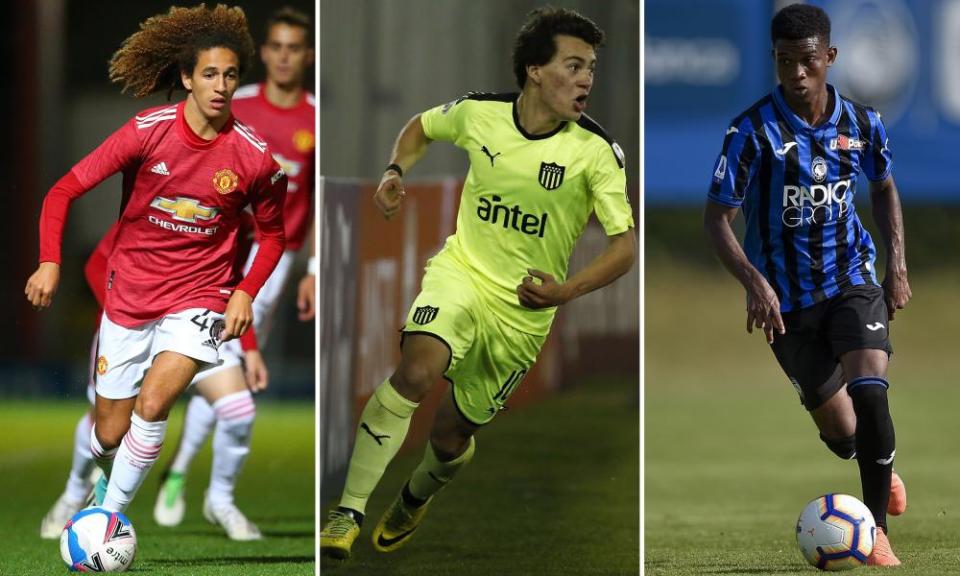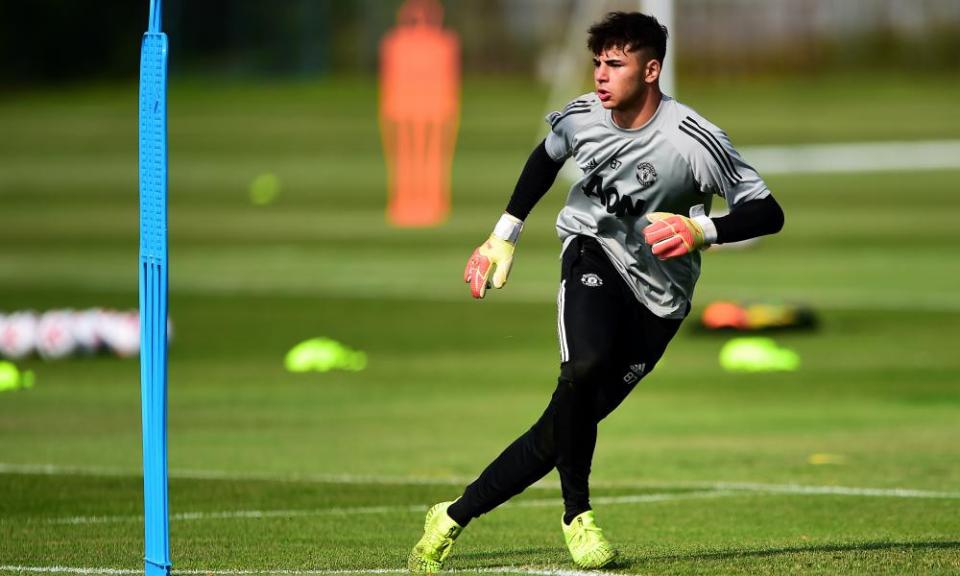Teenage kicks: how youth is driving Manchester United's transfer policy

Facundo Pellistri from Atlético Peñarol for £10m and Amad Diallo from Atalanta for £19m: in two 18-year-olds signed on deadline day the fresh front opened in Manchester United’s youth policy is illuminated.
The club’s renowned academy has had a representative in every matchday squad since 1937 – more than 4,000 – and has become a destination for some of the world’s finest prospects. Real Madrid, Barcelona, Paris Saint-Germain, Juventus, Monaco, Liverpool, Manchester City, Chelsea and Arsenal are rivals recently rejected in favour of United by members of the fresh wave.
Related: Harry Maguire may miss Manchester United's game at Newcastle
The strategy dates from when Nicky Butt became academy head in 2016 and is being used after United identified a new difficulty in acquiring A-list footballers when so-called lesser clubs no longer have to sell – Borussia Dortmund’s refusal to go below €120m for Jadon Sancho a prime example.
At 18 Pellistri and Diallo are actually outliers. Of the other 17 recruited from outside since the start of 2019 to swell United’s nursery ranks all but one have been 16. In Ed Woodward’s August 2019 £4.5m payment to Monaco for Hannibal the United executive vice-chairman acquired a poster boy for the recruitment drive. Chased by Arsenal, Liverpool and Barcelona, the 16-year-old Hannibal quickly moved from United’s under-18s (13 appearances, one goal, three assists) to the under-23s (10, two, six).
As with all juniors the club’s desired path is for the midfielder to become a member of Ole Gunnar Solskjær’s squad, as Mason Greenwood and Brandon Williams have done – and, ultimately, be part of a title-winning side. In February Butt said: “You can judge me and the people who develop for the first team in hopefully two or three years when we’re challenging for titles. If you’re challenging for titles and getting players in the first team, that’s when you know you’re doing an unbelievable job.”
Pleasing for United is how an unwanted trend is also being reversed. Sir Alex Ferguson’s retirement as manager in 2013 precipitated a slide of the senior side that was mirrored by a youth set-up in which the son of the former defender Phil Neville, Harvey, switched to City’s academy, a route also followed by Charlie McNeil seven years ago.
Neville and McNeil are back at United. The latter did not come cheap, again pointing to the ambition to invest in a gilded future. The prolific striker cost about £650,000, though the fee could rise to more than £1m. McNeil is a hot prospect having scored more than 600 goals at City.

McNeill is an illustration of how United also search within the UK. Omari Forson was a 15-year-old signed from Tottenham in July 2019 for a compensation fee of about £80,000. The defender Logan Pye and the rangy striker Joe Hugill arrived from Sunderland in May, the latter for about £300,000, leaving Arsenal and Tottenham disappointed.
Among the overseas contingent Dillon Hoogewerf was acquired from Ajax in July 2019 for about £100,000, the forward having played for their under-19s at 15, and the same summer his countryman Bjorn Hardley, a defender, was bought for £189,000 from Breda. They were joined by Martin Svidersky, a Slovakian midfielder reportedly trialled by Liverpool, Chelsea, City, Internazionale and Borussia Dortmund. Svidersky cost about £130,000, as did Mateo Mejia, a Spanish forward who joined from Real Zaragoza, United beating off interest from Real Madrid and Arsenal. The French attacker Noam Emeran cost up to £80,000, as did Johan Guadagno, a goalkeeper who reportedly claimed he turned down Inter and Anderlecht.
This year Radek Vitek’s departure from Sigma Olomouc meant another keeper bolstered the group, and in June Marc Jurado, a defender who rejected a contract with Barcelona, arrived in a £400,000 transfer, the first player recruited by United from the Catalan club since Gerard Piqué 16 years ago. Jurado was complemented by Alejandro Garnacho, a wide player for whom about £80,000 was paid to Atlético Madrid, and Álvaro Fernández Carreras, a full-back, signed for free.
As with Jurado, Carreras was effusive about the Spanish team he left, underlining the significance of the decision. “I have made the decision to leave this great club – I wanted to thank all my teammates, and the coaching staff at Real Madrid for making me a better person and footballer,” he said.
At the start of this month the centre-back Willy Kambwala left Sochaux after United paid about £3.5m for the France Under-17 captain, the Norwegian midfielder Isak Hansen-Aarøen, who made his professional debut for Tromso at 15, having preceded him in September.

All of the above, excluding Pellistri and Diallo, represents a minimum £11m investment, relative chicken feed for a club of United’s global reach. The club purport their success in the youth market to be down to three factors: the storied tradition of an academy that housed George Best, Ryan Giggs and Marcus Rashford; the coaching, facilities and proven route to the first team, Solskjær last season giving eight debuts to home-reared players, the most since the Busby Babe crop of 1952-53; and the financial incentives on offer.
There is little risk for United. Rashford, to proffer one example, is worth about £100m, having cost nothing, and even if none of the latest 19 from the pipeline emulate him, Greenwood, Williams et al, United are sure to recoup the outlay via sales of those who make careers elsewhere.
Yet the odds and United’s track record suggest one or more may well become a prominent first-team player. It seems a smart policy from Woodward and United’s football brains trust.

 Yahoo Sport
Yahoo Sport 





































